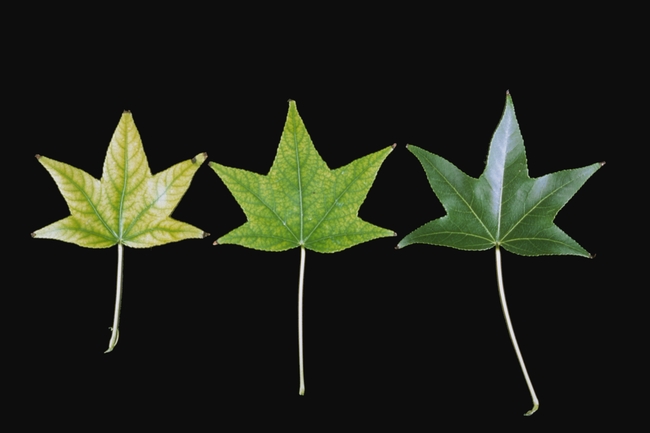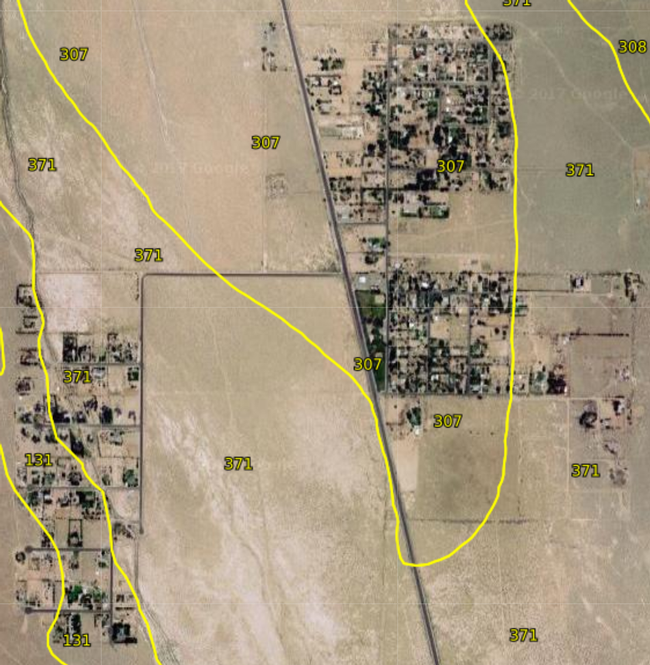The Eastern Sierra is a challenging place to garden, but Chalfant stands out as a particularly difficult place to keep non-native plants happy. The wind is a problem, for sure, but most complaints Master Gardeners receive are related to the soil.
Soils in Chalfant developed in a shallow basin that collected material washed in from limestone and volcanic sources. While residents don't have to worry about their plants being calcium-deficient, they have a host of other issues to contend with.
Broadly speaking, almost all of Chalfant has alkaline soils. This means the pH is high: about 8.5 in most places. Most garden and landscape plants would prefer a soil pH of 6.5, about 100 times more acidic. The most common effect of alkaline soils is iron deficiency.
Soils may contain abundant amounts of iron, but as the pH increases, the plant is unable to use it. Conifers, hollies, and azaleas are commonly affected. If you have planted something prone to iron deficiency, you can apply iron as a short-term fix, but the real solution is to lower the pH. This is usually done by using sulfur. An old recommendation that came from my office years ago was to apply 9 pounds of elemental sulfur per 1,000 sq. ft. This should still be valid.
Fertilizers like 9-9-9 plus Iron that are available locally can also help.
Iron deficiency is common in Chalfant, but the far eastern part and the area west of Highway 6 but east of the drainage that runs through the west side is also high in salts—a double whammy! (See the area labeled 371 below.) Soils high in salt will burn foliage and stunt growth. Watering deeply can help push the salts below the root zone, but they seem to have a way of working their way back up.
On trees, the best course of action seems to be building an earthen berm around the tree and filling the basin with water to irrigate. (Do this when plants need water, not daily.) This helps to flush the salts down low. Daily shallow watering keeps trees alive, but I've seen many problems with this approach as the trees mature since the roots stay confined to the wet area. If you have a lawn, this is probably your only option, but for single, specimen trees or foundation plants (like those in a bed) you should try to keep the salt flushed down. Unfortunately, to do this requires extra irrigation.
Try to avoid using synthetic fertilizers in this area. Most fertilizers of these types are salts and will increase salinity. Instead use organic sources of fertilizer if possible as these are less prone to add more salinity. Assuming you can keep the critters under control, I've seen gardens do fine in this area with plenty of organic material and attention to watering.
For gardens, perhaps the best solution on the west side would be to build raised beds and fill them with topsoil and organic matter. Avoid the soil altogether!

